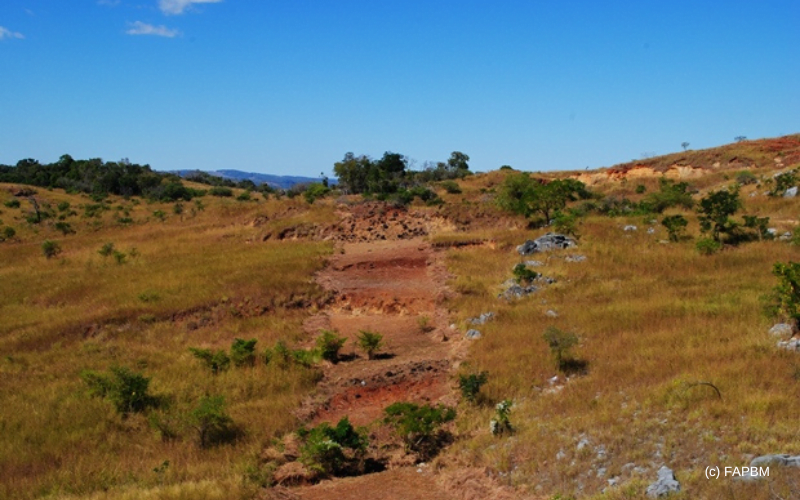
The end of the dry season in Madagascar is not a good sign for our protected areas, as it heralds an increase in fires. The managers of protected areas must be creative every year to prevent and control fires. In Beanka, BCM, the manager has been experimenting since 2017, the method of green firebreaks. Direction to the west of Madagascar, in the province of Mahajanga, Melaky region.
The Beanka protected area is regularly victim of the propagation of wild fires provoked in large part by the dahalo(large-scale crime) to hide their tracks and that of the zebus and delay their pursuers. These fires, spreading in the protected area, threaten the cover of the semi-deciduous dense rainforest, the dense dry forest, and low thicket. This particular landscape is a conservation target because it provides habitat for pollinator species (especially bees) and a medicinal plants storage. This forest preserves kilometers of underground water. The protected area is crossed by 2 large rivers and thus constitutes an immense water reservoir which feeds the fields of culture until the vast plains of Maintirano.
Periodically, burnt areas are restored, but it has become essential to find a sustainable solution. The traditional firebreak, which consists of leaving a strip of land bare, requires regular maintenance, which is tedious given the considerable size of the protected area (17,000 ha). The rocky texture of the soil and the presence of an invasive plant (mucuna pruriens) cause an unbearable stinging reaction when the microscopic spines of the pods come into contact with the skin.
The manager has therefore started thinking about how to improve the effectiveness of the firewall. With the technical support of his partner in Mauritius (Ebony Forest), they started experimenting with the green firewall over a few kilometers by mobilizing local communities. To do this, they planted 4 to 6 months old tamarind trees (20 cm high) along the traditional firebreak. These were planted at intervals of 2.5 m each during the rainy season. In the future the falling foliage will prevent weeds from growing back and keep the firebreak clean. The choice of the tamarind responds to the goals of enriching the honey varieties to be produced. When the tamarind trees will be well grown, the firebreak will be naturally maintained.
However, further studies are still necessary in view of some difficulties encountered: tamarind trees take time to grow (10 years to reach the optimum size) and obtain a really full foliage, that will limit soil evapotranspiration. The growing roots needs to be protected from the heat of the sun and paradoxically require the proximity of herbs.
For more information on the green firewall: Radosoa Andrianaivoarivelo, Biology Researcher, Beanka aniainodna@yahoo.fr




